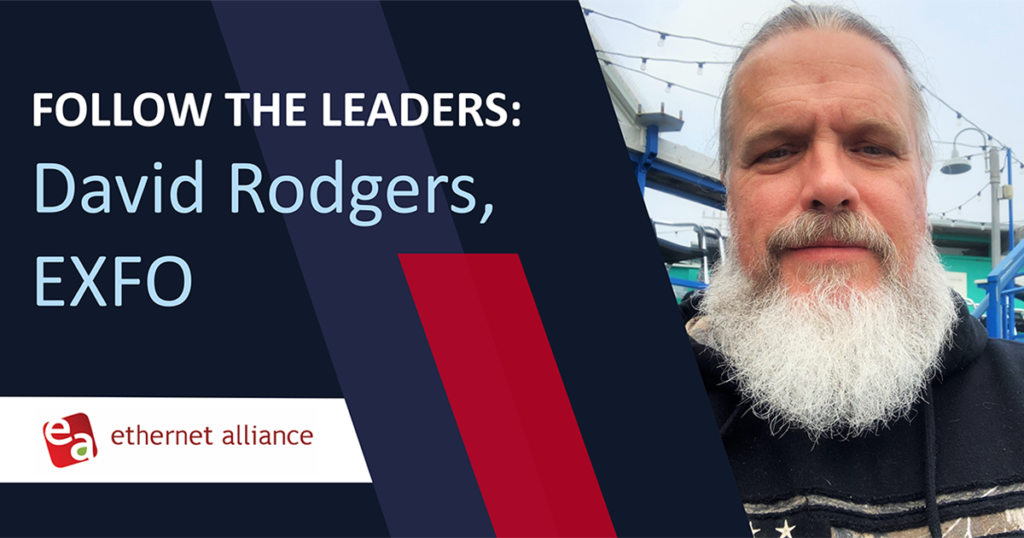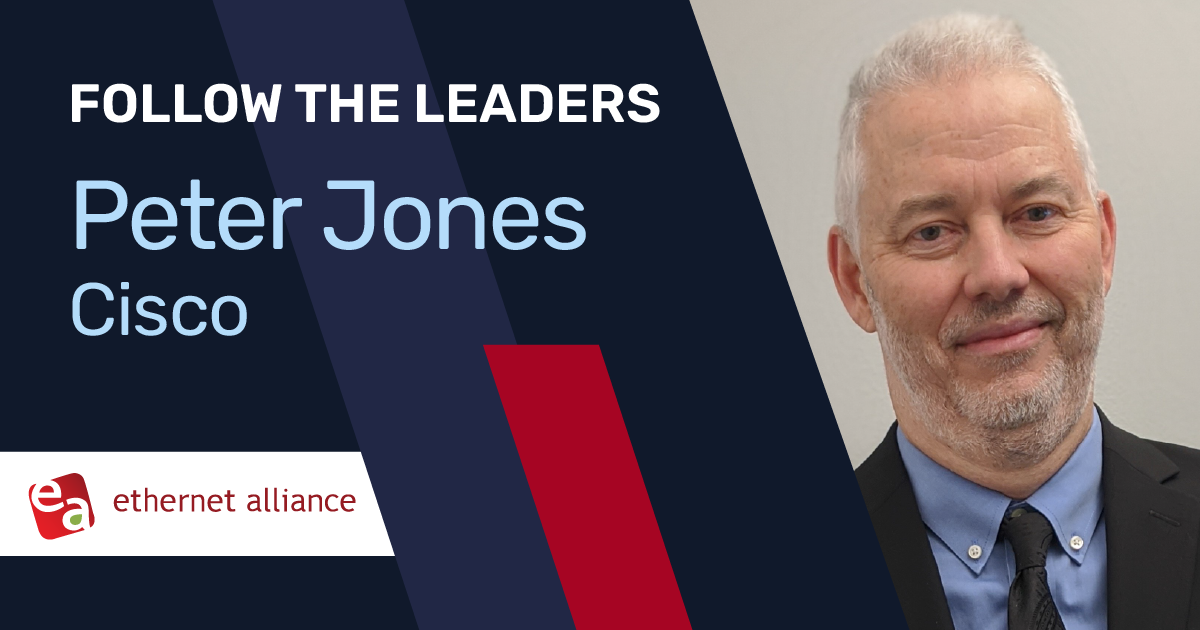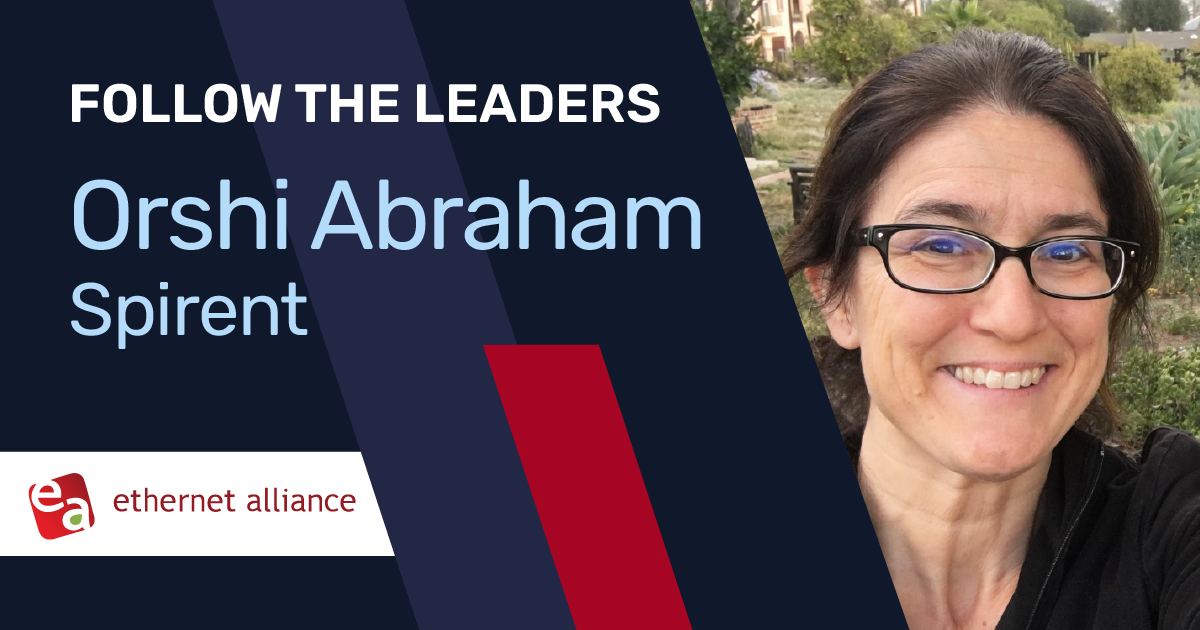Follow the Leaders: David J. Rodgers
As the industry voice of Ethernet, the Ethernet Alliance serves as a collaborative melting pot for member companies from across the Ethernet ecosystem. Dedicated to advancing Ethernet and related technologies, members work together in support of critical activities, such as bringing Ethernet standards to the marketplace, incubating new technologies, and facilitating interoperability testing.
BOLSTERING ETHERNET’S EXPANDING APPLICATION HORIZON WITH TEST & MEASUREMENT
David J. Rodgers, Ethernet Alliance Events & Conferences Committee Chair, and Technical Business Development Manager for EXFO, is a bit of an everyman when it comes to Ethernet, and test and measurement. In this Q&A, he shares perspectives gained from decades of work with connectivity technologies, and explains the importance of test and measurement (T&M) to Ethernet’s growing impact in new application spaces.
Q | Please tell us a little about yourself and your various areas of expertise?
I’m a self-proclaimed test and measurement geek; I love the creativity and innovation required to address and solve problems in this space. It intrigues me in the same way that the jigsaw puzzles I enjoy still to this day do.
I really came to appreciate T&M in 1995 with the advent of the USB protocol. There were no tools directly relevant to USB to ensure the new devices and systems coming into the market complied with the USB specification. The concept of the “plugfest” was spawned by the USB community as a means of ensuring interoperability; since that time, plugfests have been adopted on a much wider scale.
With Ethernet, the test and interoperability challenges are seemingly greater due to the nature of this beast – there are just so many implementations of Ethernet to choose from.
Q | Ethernet, USB, SAN, LAN, fibre channel, NVMe…you seem to be a bit of a connectivity renaissance man. In recent years, you’ve focused more on T&M; what’s driving its growing weight and influence in the Ethernet ecosystem?
I’m an evangelist for interoperability, likely due in part to my history with other serial technologies that have benefitted from specification compliance standards. Ethernet has been and often continues to be a “wild west” technology, largely because of its adaptability and relative ease of implementation. In the old days, with Novell networks or Banyan Vines, interoperability wasn’t required. As long as the vendor was supplying all the components, there was no need to worry about whether the products worked with any other vendor equipment.
As the market evolved to multi-vendor solutions, and companies began specializing in subcomponent products, the consumer paid the price for integrating and supporting implementations in their applications, data centers, and customer deliverables. Vendors found the post-sale costs of supporting their customers were draining revenues, often inhibiting the rollout of new products.
So, the short answer to the question of what’s driving T&M in Ethernet is…the customer. Customer satisfaction, and reduced deployment and support costs equals happier customers. And happier customers are more inclined to be interested in and accept new products.
Q |On top of everything else, you’re also the Ethernet Alliance Events & Conferences committee chair. The industry has recently seen the return of in-person events; how important are physical events versus online or digital events?
This may be a bit old school, but customers still want to kick the tires when it comes to figuring out which new products, services, technologies, and applications they need for their data centers and users. The digital events evolution was accelerated by pandemic-related lockdowns, and they’ll certainly continue to be a highly effective tool for meetings and collaboration.
But when it comes to demonstrating equipment, especially in Ethernet Alliance interoperability demos and events, I haven’t found a digital event yet that can replace the value of in-person interactions. In-person discussions are more detailed and genuine.
The Ethernet Alliance produced its first-ever virtual interoperability demonstration for OFC 2021. While it was a fantastic show of flexibility, adaptability, and teamwork in producing the demo, creating the video, and displaying the configuration virtually, the ability for customers to touch and feel the equipment was conspicuous by its absence.
Customers require the tangible experience of getting a true feel for the gear, speaking with the techs and product engineers, and getting answers to the questions arising from getting up close and personal with these demos.
Q | What are the biggest trends you see on Ethernet’s horizon?
There’s just no slowing in how and where Ethernet is being adapted to solve the communications challenges of today, tomorrow, and beyond. It’s the connectivity technology that’s driving innovations in most of the devices and applications that we use daily. The hunger for more applications isn’t just unsated, it’s growing.
The Ethernet Alliance has many working sub-groups focusing on applications: automotive, Single-Pair Ethernet, Power over Ethernet, streaming services delivering content from servers connected with high-speed links, and more. All Wi-Fi access points are wired into an Ethernet backbone to connect to the outside world. 5G deployments would be neither as pervasive nor cost-effective if not for Ethernet.
We’ll see Ethernet’s Holy Grail – 100GbE/lane – where a single link is 100 times faster than a typical NIC connection on your computer, within the next year.
I’ve previously emphasized Ethernet’s importance and ubiquity in our all-too-connected lives. Can you even imagine a world without it? I can’t. So, the biggest trend I see is Ethernet technologies being adapted for many, many more fields of application.
Q |If “Who is David J. Rodgers” was a trivia question, what would the answer be?
Wow, what a loaded question! And a tough one, too. I would have to say David J. Rodgers is an adventurer, and yes, a renaissance man. Not unlike the adventurers of old, my journey both in life and T&M has been one of accepting, confronting, and overcoming challenges. The myriad of skills I’ve gained throughout the years have given me critical tools and unique perspectives that I depend on in my personal and professional lives.





